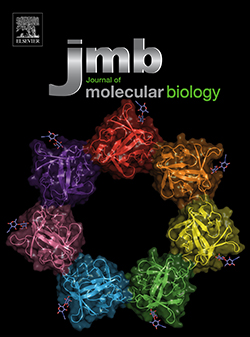A paper written by Associate Professor of Molecular Biology and Biochemistry Rich Olson and his former students was designated as an "Editor's Pick" by the Journal of Biological Chemistry. Only 2% of the approximately 6,600 papers published each year in the journal receive this designation. Titled "The 1.9 Å crystal structure of the extracellular matrix protein Bap1 from Vibrio cholerae provides insights into bacterial biofilm adhesion," the paper, published on Oct. 4, explores how bacteria "glues" itself to surfaces in the environment. The co-authors include Alison Biester '19, Ethan Chupp '18, Jianyi Lu '17, Charlie Visudharomn '17 and Katherine Kaus PhD…
Associate Professor of Molecular Biology and Biochemistry Rich Olson and members of his lab have uncovered the structural basis for how the bacterial pathogen responsible for cholera targets carbohydrate receptors on host cells—an important finding for the future development of treatment strategies against infectious bacteria. In their paper "Structural basis of mammalian glycan targeting by Vibrio cholerae cytolysin and biofilm proteins," published in the Feb. 12 issue of PLoS Pathogens, Olson and his team—Swastik De PhD '16; graduate students Katherine Kaus and Brandon Case; and Shada Sinclair '16—looked at Vibrio cholerae, an aquatic microbe responsible for cholera, a potentially life-threatening…
A figure created by Katherine Kaus, graduate student in the Molecular Biology and Biochemistry Department, was selected to run as the featured cover graphic in the Sept. 9 Journal of Molecular Biology. The graphic is related to her article, titled "Glycan Specificity of the Vibrio vulnificus Hemolysin Lectin Outlines Evolutionary History of Membrane Targeting by a Toxin Family," which was published in the journal on July 29. It is co-authored by Rich Olson, assistant professor of molecular biology and biochemistry, and researchers at the University of Connecticut. The abstract appears online here. Vibrio vulnificus is an emerging human pathogen that causes severe food poisoning…
A paper co-authored by Rich Olson, associate professor of molecular biology and biochemistry, and Sophia Levan '12 was published in The Journal of Molecular Biology, March 2013. The article is titled, "Vibrio cholerae Cytolysin Recognizes the Heptasaccharide Core of Complex N-Glycans with Nanomolar Affinity." The human intestinal pathogen Vibrio cholerae secretes a pore-forming toxin, V.cholerae cytolysin (VCC), which contains two domains that are structurally similar to known carbohydrate-binding proteins. Olson and Levan used a combination of structural and functional approaches to characterize the carbohydrate-binding activity of the VCC toxin. At Wesleyan, Levan was the recipient of the Butterfield Prize, the Graham Prize…
Rich Olson, assistant professor of molecular biology and biochemistry, received a grant worth $460,197 from the National Institutes of Health's National Institute of Allergy and Infectious Diseases on Aug. 8. The grant will support his research on "Mechanism of Cell Membrane Targeting by Vibrio cholera Cytolysin" through July 31, 2015. Vibrio cholerae cytolysin (VCC) belongs to a family of secreted toxins produced by pathogenic bacteria that allows them to evade the immune system and to colonize the human body. Understanding how bacteria and their toxins target cells is important in developing therapies against human infectious diseases.
In a newly published paper, Rich Olson, assistant professor of molecular biology and biochemistry, describes studies of a toxin produced by the bacterium that causes cholera. The paper –“Crystal structure of the Vibrio cholerae cytolysin heptamer reveals common features among disparate pore-forming toxins” – is the culmination of nearly eight years work. Co-authored with Swastik De, a graduate student in Olson’s lab, the paper has been published online by Proceedings of the National Academy of Sciences (PNAS) and will appear in a print edition later this spring. Olson’s lab studies the molecular details of how pathogens invade human hosts. Bacteria produce toxins to…


